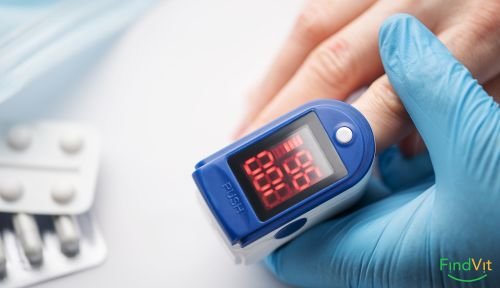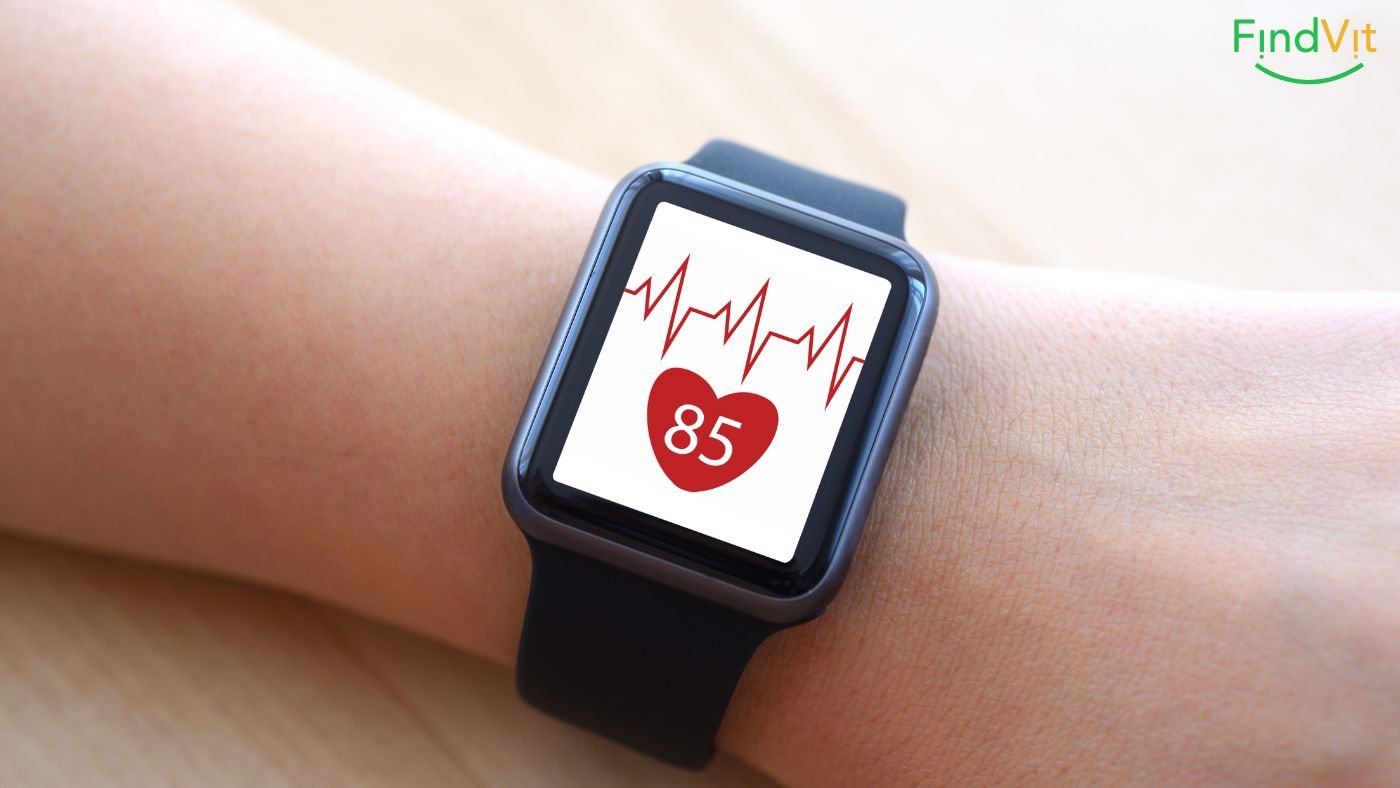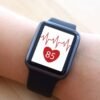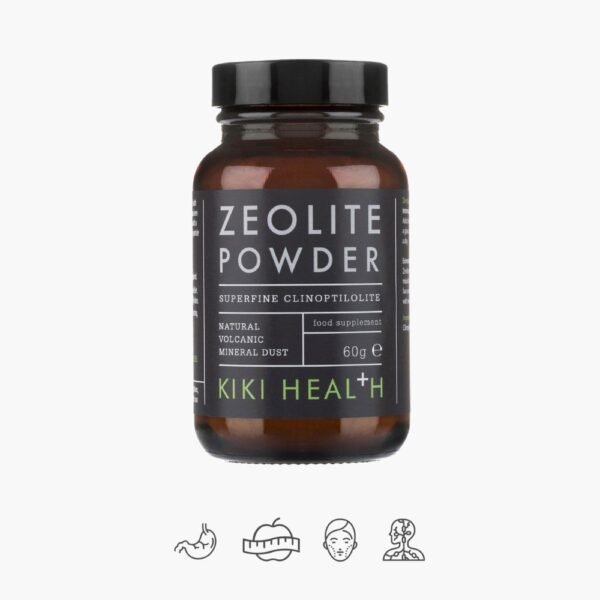The human heart beats an average of more than 2.5 billion times during a lifetime. This amazing organ works tirelessly to maintain a vital pulse rhythm, the rate of which (pulse rate) is one of the most important indicators of health.
The normal heart rate can vary from person to person, depending on age, fitness level, and general health. Many people are unaware of what their optimal heart rate should be and how to properly control it during physical activity.
In this article, we will look at what healthy heart rates are for different age groups, how to measure your heart rate correctly, and how physical activity affects your heart rate. You will also learn when changes in your heart rate can pose a health risk and how to properly adjust your training intensity.
Interesting facts about the heart
The heart is an amazing organ, about the size of a human fist and weighing an average of 220-260 grams. The left side of the heart is thicker and stronger because it pumps blood throughout the body, while the right side pumps blood to the lungs.
Here are some interesting facts about the heart:
- The heart beats about 100,000 times a day
- During an average lifetime, the heart pumps about 5.7 million liters of blood
- Heart rate slows down during sleep
- Women's hearts typically beat faster (78 beats per minute) than men's (70 beats per minute)
Scientific studies reveal interesting facts about heart health. Losing 101% of your excess weight reduces your risk of developing cardiovascular disease by 201%. Smokers are twice as likely to have a heart attack as non-smokers.
Interestingly, dog owners have a lower risk of heart disease because they get more exercise when walking their pets. Brisk walking is better for the heart than running – studies show that walkers have half the risk of heart disease compared to runners.
Emotions also have a significant impact on heart health. People who are constantly stressed, competitive, and self-deprecating are 7 times more likely to develop heart disease. Even breaking up with a loved one can cause real physiological changes in the heart due to a surge in stress hormones.

Normal Pulse Ranges by Age
Normal pulse rates vary depending on a person's age and physical condition. It is important to know the normal range for your age group so that you can monitor your heart health.
Pulse rates for children and adolescents
The heart rate of newborns and young children is much faster than that of adults. The pulse rate of newborns is 120-160 beats per minute, and for babies from 1 to 12 months - 100-150 beats per minute.
As the child grows, the pulse rate gradually decreases:
- Children 1-3 years old: 90-140 beats/min
- Children 3-6 years old: 80-130 beats/min
- Children 6-12 years old: 70-110 beats/min
Adult pulse rates
The normal resting heart rate for adults ranges between 60-100 beats per minute. Women's pulse is usually slightly higher (70-80 beats/min) than men (60-70 beats/min).
Studies show that people with resting heart rates lower than 80 beats per minute live longer. According to the Framingham study, people with a heart rate above 90 beats per minute face a higher risk of mortality compared to those with a pulse rate of 60-70 beats per minute.
Characteristics of athletes' pulse
The heart of people who exercise regularly adapts to physical exertion and becomes more efficient. Professional athletes can have extremely low resting heart rates – 40-60 beats per minute. Such a low pulse rate indicates a good condition of the cardiovascular system.
The maximum allowable pulse rate during physical exertion is calculated using the formula: 220 minus ageFor example, a 20-year-old's maximum heart rate should not exceed 200 beats per minute, and on the 50th anniversary – 170 beats per minute.

Pulse Measurement Methods and Techniques
Taking your pulse correctly is an important skill to help monitor your heart health. Modern technology offers a variety of measurement methods, but it's important to know traditional methods as well.
Traditional methods of measuring pulse
Manual pulse measurement is performed in two main locations:
- On the wrist – by placing two fingers on the radial artery
- On the neck – by gently pressing on the carotid artery near the trachea
When measuring the pulse, it is calculated 60 seconds or 30 seconds and the result is multiplied by two. It is important to measure at rest, when the body has not experienced physical exertion.
Modern heart rate monitors
Modern devices offer more accurate and convenient pulse measurement. Blood pressure monitors not only measures blood pressure, but also determines pulse rate, and some models can detect irregular heart activity.
Smartwatches use optical sensors that emit green light and monitor its reflection from red blood cells. For more professional monitoring, pulse oximeters, which measure not only the pulse, but also the oxygen level in the blood.
Common measurement errors
The most common errors in measuring pulse are related to incorrect timing and technique. Measurements can be distorted by:
- Dark nail polish or artificial nails
- Cold extremities or poor circulation
- Measurement immediately after exercise
- Too much pressure when measuring
For the most accurate results, it is recommended to measure your pulse in the morning, before any physical activity. When measuring with a blood pressure machine, it is important to pay attention to the duration of the measurement - the longer the measurement, the more accurately heart rhythm irregularities are detected.

The Effect of Physical Activity on Heart Rate
Physical activity has a significant impact on heart function and pulse rate. Recent studies confirm that regular exercise can improve cardiovascular health in the long term.
Effects of aerobic activity
Aerobic exercise, including yoga, can lower your resting heart rate over time. Regular aerobic activity improves blood flow and oxygen delivery to the muscles. Studies show that the hearts of physically active people become stronger, increasing their size and power.
Benefits of aerobic activity for the heart:
- Improves muscle and ligament elasticity
- Increases immune reactivity
- Reduces arterial blood pressure
- Improves sleep quality
The impact of anaerobic exercise
Strength training also has a positive effect on heart health, although scientists are still studying the exact mechanism of action. Anaerobic work is particularly beneficial when it comes to improving heart muscle strength. Studies confirm that this type of training helps the heart work more efficiently during intense exercise.
The importance of the recovery period
The recovery period after exercise is particularly important for heart health. A recent review of studies suggests that the time it takes for your heart rate to return to normal is a good indicator of overall heart health—the faster your heart rate slows down, the better.
Exercise improves blood circulation and heart function, which shortens the time it takes for the heart rate to slow down after exercise. The intensity of the recovery process means that at some point after exercise, energy reserves exceed their pre-exercise levels.
Important to know: It has been observed that heart rate decreases more quickly after exercise in individuals with better aerobic capacity.

Optimal Heart Rate Zones for Training
Proper selection of training intensity according to heart rate zones is the key to effective and safe exercise. Heart rate monitoring helps you achieve your goals and avoid overload.
Beginner training areas
Beginners are recommended to start with a lower intensity – 50-60% maximum heart rate. This zone is called the warm-up zone and is a great starting point for new athletes. The next zone, 60-70% maximum heart rate, is optimal for fat burning and overall endurance development.
Beginners should:
- For the first four weeks, exercise in heart rate zone 1-2 for 30-40 minutes
- Monitor recovery time after workouts
- Gradually increase the load
Advanced training intensity
Advanced athletes can train 70-80% in the maximum heart rate zone, which is called the aerobic zone. This zone effectively improves endurance and the capacity of the cardiopulmonary system. The anaerobic zone (80-90%) and the red zone (90-100%) are recommended only for high-performance athletes.
Optimal training zones for advanced users:
| Zone | Intensity | Impact |
|---|---|---|
| Aerobic | 70-80% | Improving endurance |
| Anaerobic | 80-90% | Speed development |
| Red | 90-100% | Maximum capacity |
Calculating maximum heart rate
The maximum pulse rate is calculated using the formula: 220 minus ageFor example, a 20-year-old's maximum heart rate would be 200 beats per minute, and the target training zone would be 120-170 beats per minute.
It is important to remember that heart rate is influenced by various factors: physical activity, body composition, ambient temperature, emotional state and some medications. Therefore, it is recommended to use a heart rate monitor, which will help you accurately monitor your heart rate during training.
Know Your Numbers: Maximum and Target Heart Rate by Age
This table shows the target heart rate zones for different age groups.
Select the age category closest to your age and view your target heart rate. For moderate-intensity physical activity, your target heart rate is around 50–70 bpm of your maximum heart rate. For vigorous-intensity physical activity, this is around 70–85 bpm.
These figures are approximate and should be used as a guide.1
| Age | Target Heart Rate Zone (50–85%) | Predicted Maximum Heart Rate |
|---|---|---|
| 20 years | 100-170 beats per minute (bpm) | 200 dpm |
| 30 years | 95–162 dpm | 190 dpm |
| 35 years old | 93–157 dpm | 185 dpm |
| 40 years | 90–153 dpm | 180 dpm |
| 45 years old | 88–149 dpm | 175 dpm |
| 50 years | 85–145 dpm | 170 dpm |
| 55 years old | 83–140 dpm | 165 dpm |
| 60 years old | 80–136 dpm | 160 dpm |
| 65 years old | 78–132 dpm | 155 dpm |
| 70 years | 75–128 dpm | 150 dpm |
Using this table, you can assess the intensity of your physical activity and adapt it to your goals and health status.

Dangerous Pulse Changes
Changes in heart rhythm can signal serious health problems, so it is important to recognize dangerous symptoms and seek medical attention in a timely manner.
When should you be concerned?
Medical professionals emphasize that special attention should be paid to the following symptoms:
- A sustained pulse rate above 100 beats per minute at rest
- Heart rate less than 60 beats per minute with other symptoms
- Irregular heartbeat that occurs more than 2-3 times a week
- Chest pain, shortness of breath, or fainting along with changes in pulse
- Sudden weakness or dizziness
Risk groups
People with certain medical conditions are at higher risk of experiencing dangerous heart rhythm disturbances. Studies show that atrial fibrillation increases the risk of stroke by as much as six times.
Main risk groups:
- People over 65 years old
- People with diabetes
- Those with high blood pressure
- Individuals with thyroid disorders
- People after heart surgery
Referral to specialists
It is necessary to consult a doctor immediately when:
- Pulse irregularities occur more than 2-3 times a week
- General weakness or shortness of breath is felt along with changes in pulse
- After physical exertion, the pulse does not return to normal for a long time
Doctors recommend performing 24-hour Holter monitoring, which helps identify rhythm disorders. This test is particularly useful when patients experience syncope of unknown origin or recurrent irregular heartbeats.
Important to know: Some patients may not experience symptoms of atrial fibrillation, so regular health check-ups are essential, especially for those at risk.

Nutrients that improve heart function
Proper nutrition plays a crucial role in maintaining a healthy heart rhythm and normal pulse. Scientific research shows that certain nutrients are particularly important for the cardiovascular system.
Essential vitamins and minerals for the heart
B group vitamins plays a special role in heart function. Vitamin B12 is involved in blood production and supports the health of the nervous system. A deficiency of this vitamin can cause palpitations and shortness of breath. Vitamin B6, together with B12 and folic acid, reduces the level of homocysteine in the blood, which is associated with an increased risk of atherosclerosis.
Potassium and magnesium are two essential minerals for heart health:
- Potassium regulates heart rhythm and participates in the transmission of nerve impulses
- Magnesium protects blood vessels from atherosclerosis and reduces the likelihood of clot formation
The most beneficial food groups
| Product group | Benefits for the heart |
|---|---|
| Leafy vegetables | Vitamin K, calcium, iron |
| Fatty fish | Omega-3 acids, vitamins B12 and B6 |
| Whole grain products | Fiber that lowers cholesterol |
| Berries | Antioxidants, vitamins C, K1, magnesium |
Avocados are notable for containing twice as much potassium as bananas, as well as 20 different vitamins and minerals. Studies show that regular consumption of avocados can reduce bad cholesterol levels by as much as 221% per week.
Herbal extracts and spices
Hawthorn extract strengthens the heart muscle and regulates heart rate. Garlic extract helps maintain proper cholesterol levels in the blood and improves blood circulation in small blood vessels.
Sources of Omega-3 Fatty Acids
Oily fish such as salmon, trout and mackerel are excellent sources of omega-3 fatty acids. Studies show that regular consumption of oily fish 2-3 times a week can reduce the risk of cardiovascular diseases such as heart attack, stroke and high blood pressure.
Rich in antioxidants
Tomatoes are a major source of the antioxidant lycopene, which helps reduce the risk of heart disease. Dark chocolate (with at least 701% cocoa) contains flavonoids, which lower blood pressure and cholesterol levels.
Olive oil, especially unrefined extra virgin, is rich in monounsaturated fatty acids and antioxidants. Studies confirm that regular consumption of olive oil helps maintain a healthy heart rhythm and reduces the risk of heart disease.
FAQ Part: Pulse Rate
What is a normal pulse?
A normal resting heart rate for an adult is usually between 60 and 100 beats per minute. Physical condition, age, and lifestyle can affect this rate.
What pulse rate is considered too fast?
If your resting heart rate is above 100 beats per minute, it's called tachycardia. It can indicate stress, dehydration, or a health problem.
When is the pulse too slow?
A resting heart rate of less than 60 beats per minute is called bradycardia. It is often normal for athletes, but in some cases it can indicate a health problem.
How can you maintain a healthy pulse?
A healthy heart rate is maintained by regular physical activity, a balanced diet, stress management, and adequate sleep. It is also important to have regular health checkups.
Is it possible to measure your pulse yourself?
Yes, you can measure your pulse by placing two fingers on your wrist or neck and counting the beats in 60 seconds. You can also use smartwatches or other technologies.
Conclusions
Heart rate monitoring is an important part of health care. Regular pulse measurement, adequate physical activity, and a balanced diet help maintain a healthy heart rate and prevent potential health problems.
Everyone should know the pulse rates for their age group and recognize dangerous symptoms. It is important to adhere to the recommended pulse zones when exercising, starting with a lower intensity and gradually increasing the load. The right choice of foods, especially those rich in omega-3 fatty acids, potassium and magnesium, strengthens the cardiovascular system.
A healthy heart is the foundation of a long and quality life. Monitoring your heart rate should not become an obsession, but regular attention to this indicator will help you notice possible disorders in time and avoid more serious health problems.











